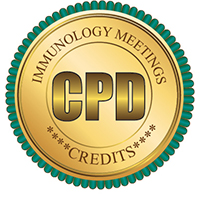Xiao-Lin Tian
M.D degree, Shanghai First Medical University
Title: Targeting both De Novo Biosynthesis and Recycling of Undecaprenyl Phosphate as A New Antimicrobial Strategy against Gram-positive Bacteria
Biography
Biography: Xiao-Lin Tian
Abstract
Antimicrobial agents that target bacterial cell wall biosynthesis are among the most successful armamentaria against bacterial infections. It is well known that undecaprenyl phosphate (C55-P or Up) is an essential lipid carrier required for cell wall biosynthesis. Up is synthesized both via the de novo biosynthesis from dephosphorylation of undecaprenyl pyrophosphate (Upp) in the cytoplasm and via the recycling of released Upp after glycan is transferred to other molecules outside the cytoplasm. Both reactions are catalyzed by undecaprenyl pyrophosphate phosphatase (UppP). In addition to this pathway, Streptococcus mutans is found to have an alternative pathway to generate Up from phosphorylation of undecaprenol (C55-OH) catalyzed by an ortholog of diacylglycerol kinase (DagK). In this study, we aimed to determine whether simultaneous inactivation of uppP and dagK or blocking both the UppP- and DagK-catalyzed pathways affected the growth of S. mutans in response to cell wall-acting antibiotics. Two single-gene deletion mutants, ΔuppP and ΔdagK, and a double deletion mutant ΔdagK/uppP, were constructed for antibiotic susceptibility tests. The results revealed that deletion of uppP resulted in a mutant (ΔuppP) that was highly sensitive to bacitracin (MIC = 0.25 μg/mL), while deletion of dagK (ΔdagK) had much less effect (MIC ≈ 20 μg/mL) than the parent (MIC = 40 μg/mL). However, double deletion of both dagK and uppP nearly abolished the resistance of S. mutans to bacitracin, especially under pH 6.0. A combination of UppP inhibitor bacitracin (20 μg/mL) with DgK inhibitor R59949 (25 μM) almost completely inhibited the growth of S. mutans. It is concluded that antibacterial strategies that target both UppP- and DagK-catalyzed pathways could be an effective appproach against Gram-positive bacteria such as S. mutans.

